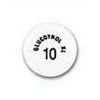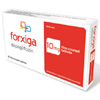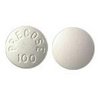categories / Diabetes / Micronase:
 | Active Ingredient: Glyburide Micronase is used for treating type 2 diabetes. Other names for this medication: Daonil, Diabeta, Euglucon, Glez, Gliben, Glibenclamide, Gliburida, Med glybe, Novo-glyburide, Nu-glyburide Show all |
Micronase 5mg
| Package | Per Pill | Price | Savings | Bonus | Order |
|---|---|---|---|---|---|
| 5mg × 90 pills | $0.47 | $42.19 | + Cialis | Add to cart | |
| 5mg × 120 pills | $0.42 | $50.63 | $5.63 | + Viagra | Add to cart |
| 5mg × 180 pills | $0.38 | $67.51 | $16.88 | + Levitra | Add to cart |
| 5mg × 360 pills | $0.33 | $118.14 | $50.63 | + Cialis | Add to cart |
Micronase 2.5mg
| Package | Per Pill | Price | Savings | Bonus | Order |
|---|---|---|---|---|---|
| 2.5mg × 90 pills | $0.41 | $37.15 | + Viagra | Add to cart | |
| 2.5mg × 120 pills | $0.37 | $44.58 | $4.95 | + Levitra | Add to cart |
| 2.5mg × 180 pills | $0.33 | $59.44 | $14.86 | + Cialis | Add to cart |
| 2.5mg × 360 pills | $0.29 | $104.03 | $44.58 | + Viagra | Add to cart |
INDICATIONS
Micronase (Glyburide) is an oral diabetes medicine that helps control blood sugar levels.
Glyburide is used to treat type 2 diabetes.
This medication is not for treating type 1 diabetes.
Glyburide may also be used for other purposes not listed in this medication guide.INSTRUCTIONS
Take exactly as prescribed by your doctor. Do not take in larger or smaller amounts or for longer than recommended. Follow the directions on your prescription label. Your doctor may occasionally change your dose to make sure you get the best results.
Take glyburide with your first meal of the day, unless your doctor tells you otherwise.
Your blood sugar will need to be checked often, and you may need other blood tests at your doctor's office. Visit your doctor regularly.
Know the signs of low blood sugar (hypoglycemia) and how to recognize them: headache, hunger, weakness, sweating, tremor, irritability, or trouble concentrating.
Always keep a source of sugar available in case you have symptoms of low blood sugar. Sugar sources include orange juice, glucose gel, candy, or milk. If you have severe hypoglycemia and cannot eat or drink, use an injection of glucagon. Your doctor can give you a prescription for a glucagon emergency injection kit and tell you how to give the injection.
Also watch for signs of blood sugar that is too high (hyperglycemia). These symptoms include increased thirst, increased urination, hunger, dry mouth, fruity breath odor, drowsiness, dry skin, blurred vision, and weight loss.
Check your blood sugar carefully during a time of stress or illness, if you travel, exercise more than usual, drink alcohol, or skip meals. These things can affect your glucose levels and your dose needs may also change.
Your doctor may want you to stop taking glyburide for a short time if you become ill, have a fever or infection, or if you have surgery or a medical emergency.
Ask your doctor how to adjust your glyburide dose if needed. Do not change your medication dose or schedule without your doctor's advice.
If there are any changes in the brand, strength, or type of glyburide you use, your dosage needs may change. Always check your refills to make sure you have received the correct brand and type of medicine prescribed by your doctor.DOSAGE
Take as prescribed by your doctor.
STORAGE
Store at room temperature, protected from moisture, heat, and light.
MORE INFO:
Active ingredient: Glyburide
You should not use this medication if you are allergic to glyburide, or:
if you are being treated with bosentan (Tracleer);
if you have type 1 diabetes; or
if you are in a state of diabetic ketoacidosis (call your doctor for treatment with insulin).
To make sure you can safely take glyburide, tell your doctor if you have any of these other conditions:
hemolytic anemia (a lack of red blood cells);
an enzyme deficiency called glucose-6-phosphate dehydrogenase deficiency (G6PD);
a nerve disorder affecting bodily functions;liver or kidney disease;
if you are allergic to sulfa drugs; or
if you have been using insulin or taking chlorpropamide (Diabinese).Certain oral diabetes medications may increase your risk of serious heart problems. However, not treating your diabetes can damage your heart and other organs. Talk to your doctor about the risks and benefits of treating your diabetes with glyburide.
FDA pregnancy category C. It is not known whether glyburide will harm an unborn baby. Similar diabetes medications have caused severe hypoglycemia in newborn babies whose mothers had used the medication near the time of delivery. Tell your doctor if you are pregnant or plan to become pregnant while using this medication. It is not known whether glyburide passes into breast milk or if it could harm a nursing baby.
Do not use this medication without telling your doctor if you are breast-feeding a baby. Older adults may be more likely to have low blood sugar while taking glyburide.
Important safety information:
You should not use this medication if you are allergic to glyburide, if you are being treated with bosentan (Tracleer), if you have type 1 diabetes, or if you are in a state of diabetic ketoacidosis (call your doctor for treatment with insulin).
Before taking glyburide, tell your doctor if you are allergic to sulfa drugs, if you have been using insulin or chlorpropamide (Diabinese), or if you have hemolytic anemia (a lack of red blood cells), an enzyme deficiency (G6PD), a nerve disorder, liver disease, or kidney disease.
Take care not to let your blood sugar get too low. Low blood sugar (hypoglycemia) can occur if you skip a meal, exercise too long, drink alcohol, or are under stress. Symptoms include headache, hunger, weakness, sweating, tremor, irritability, or trouble concentrating. Carry hard candy or glucose tablets with you in case you have low blood sugar. Other sugar sources include orange juice and milk. Be sure your family and close friends know how to help you in an emergency.Drug interactions
Tell your doctor about all other medications you use, especially:
a blood thinner such as warfarin (Coumadin, Jantoven);
cyclosporine (Gengraf, Neoral, Sandimmune);
disopyramide (Norpace);
fluconazole (Diflucan), ketoconazole (Nizoral);
fluoxetine (Prozac);
rifampin (Rifadin, Rimactane, Rifater);
an ACE inhibitor such as enalapril (Vasotec), lisinopril (Prinivil, Zestril), ramipril (Altace), and others; or
an antibiotic such as ciprofloxacin (Cipro), levofloxacin (Levaquin), and others.
Using certain medicines can make it harder for you to tell when you have low blood sugar. Tell your doctor if you use any of the following:
albuterol (Proventil, Ventolin);
clonidine (Catapres);
reserpine; or
beta-blockers such as atenolol (Tenormin), carvedilol (Coreg), metoprolol (Lopressor, Toprol), propranolol (Inderal, InnoPran), and others.
You may be more likely to have hyperglycemia (high blood sugar) if you take glyburide with:
isoniazid;
diuretics (water pills);
steroids (prednisone and others);
phenothiazines (Compazine and others);
thyroid medicine (Synthroid and others);
birth control pills and other hormones;
heart or blood pressure medications (Cartia, Cardizem, Nifedical, Covera, Verelan, and others);
niacin (Advicor, Niaspan, Niacor, Simcor, Slo-Niacin, and others);
seizure medicines (Dilantin and others); and
diet pills or medicines to treat asthma, colds or allergies.
You may be more likely to have hypoglycemia (low blood sugar) if you take glyburide with:
clarithromycin (Biaxin);
exenatide (Byetta);
probenecid (Benemid);
heart or blood pressure medication (Accupril, Altace, Lotensin, Prinivil, Vasotec, Zestril, and others);
some nonsteroidal anti-inflammatory drugs (NSAIDs);
aspirin or other salicylates (including Pepto-Bismol);
sulfa drugs (Bactrim, Gantanol, Septra, and others);
a monoamine oxidase inhibitor (MAOI); and
other oral diabetes medications, especially acarbose (Precose), metformin (Glucophage), miglitol (Glyset), pioglitazone (Actos), or rosiglitazone (Avandia).
These lists are not complete and there are many other medicines that can increase or decrease the effects of glyburide on lowering your blood sugar. Tell your doctor about all medications you use. This includes prescription, over-the-counter, vitamin, and herbal products. Do not start a new medication without telling your doctor.Stop using glyburide and get emergency medical help if you have any of these signs of an allergic reaction: hives; difficulty breathing; swelling of your face, lips, tongue, or throat. Stop taking this medication and call your doctor at once if you have any of these serious side effects:
nausea, stomach pain, low fever, loss of appetite, dark urine, clay-colored stools, jaundice (yellowing of the skin or eyes);
pale skin, confusion or weakness;
easy bruising or bleeding, purple or red pinpoint spots under your skin; or
headache, trouble concentrating, memory problems, feeling unsteady, hallucinations, fainting, seizure, shallow breathing or breathing that stops.
Less serious side effects may include:
mild nausea, heartburn, feeling full;
joint or muscle pain;
blurred vision; or
mild itching or skin rash.
This is not a complete list of side effects and others may occur. Call your doctor for medical advice about side effects.
Customers who bought this product also bought
 glucophage is used for treating type 2 diabetes.More infoCozaarOnly$0.88Per PillBuy
glucophage is used for treating type 2 diabetes.More infoCozaarOnly$0.88Per PillBuy cozaar is used for treating high blood pressure alone or with other medicines.More infoGlysetOnly$1.95Per PillBuy
cozaar is used for treating high blood pressure alone or with other medicines.More infoGlysetOnly$1.95Per PillBuy glyset is indicated as an adjunct to diet and exercise to improve glycemic control in adults with type 2 diabetes mellitus.More infoGlucotrol XLOnly$0.38Per PillBuy
glyset is indicated as an adjunct to diet and exercise to improve glycemic control in adults with type 2 diabetes mellitus.More infoGlucotrol XLOnly$0.38Per PillBuy glucotrol xl is used for treating type 2 diabetes in patients who cannot control blood sugar levels by diet and exercise alone.More infoForxigaOnly$2.8Per PillBuy
glucotrol xl is used for treating type 2 diabetes in patients who cannot control blood sugar levels by diet and exercise alone.More infoForxigaOnly$2.8Per PillBuy forxiga is a tablet medication which helps to reduce blood glucose levels by helping the kidneys to remove glucose from the blood and excrete it within urine.More infoPrecoseOnly$0.59Per PillBuy
forxiga is a tablet medication which helps to reduce blood glucose levels by helping the kidneys to remove glucose from the blood and excrete it within urine.More infoPrecoseOnly$0.59Per PillBuy precose is used for treating type 2 diabetes in adults whose diabetes cannot be managed with diet alone.More info
precose is used for treating type 2 diabetes in adults whose diabetes cannot be managed with diet alone.More info- Contact us
- |
- Policy
- |
- FAQ
- |
- Testimonials
- |
- Bestsellers
- |
- About us